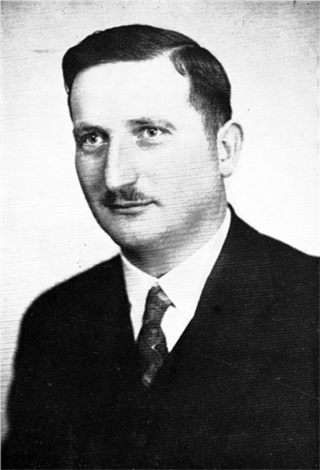DI Hans Sylvester

Personalia
Born:
Died:
Profession:
Persecution:
Imprisonment 12.03.1938 - 23.05.1938,
Dachau concentration camp 23.05.1938 - 19.01.1939,
Murdered on 19.01.1939
KZ Number:
Memberships
Curriculum Vitae
Hans Sylvester attended grammar school with the Piarists in Magyarovar [Hungarian Altenburg] and then with the Benedictines in Györ [Raab]. After graduating from high school, he served in the Austro-Hungarian army from 1916 to 1918. Army from 1916 to 1918 and was deployed on the Isonzo Front. He then began his studies at the University of Natural Resources and Applied Life Sciences in Vienna, graduating in 1923 with a degree in engineering. He was an estate manager until 1926 and then joined the Burgenland Chamber of Agriculture in Mattersburg and Neusiedl am See as a district agricultural officer, advancing to Chamber Director in 1929.
From 1927-1930 he was a member of the Burgenland Provincial Parliament and in 1930/31 a member of the National Council, as well as a member of the Burgenland Provincial Government in 1926/27 and 1931-1934. He co-founded the VF in Burgenland and was appointed Burgenland Provincial Leader in 1933. In February 1934, he was appointed governor. He remained in office until 1938.
After the Anschluss, as a Christian Socialist and representative of the corporative state, he was arrested on March 12, 1938 in the Eisenstadt provincial parliament, stripped of all his offices and transferred to Vienna. He was taken from the police prison to Dachau concentration camp on May 23, 1938. Here, Hans Sylvester was, among other things, "harnessed to a truck as a draught animal" and had to do this hard labor for ten hours a day in all weathers.
"When the first Austrians were released just before Christmas [1938] and he wasn't there, his courage to face life collapsed completely. I was his roommate [...] We had a locker and a double bed together, he was upstairs, I was downstairs. The second Saturday in January was his undoing. He didn't want to miss out on the hot bath. It was 15 degrees cold and the bathing room was 30 degrees hot. Dressed in light Zwilch, only strong natures could endure this change of 40-50 degrees. When we gathered outside after the bath to march into the block, Sylvester stood in front of me, shivering all over." - This is how A. Frisch described the events.
After the bath on the second Saturday in January [1939], his death throes began:
"His neck swelled up red over his ears, his arm collapsed and we had to carry him into the living room. We laid him down on sticks by the warm tiled stove. ... He rattled and moaned in his sleep ... He didn't talk at all and showed everyone a contented, kind smile. In the night we were woken by his moaning, which soon became a roar. His body shook with unspeakable pain. On Sunday evening, he was only allowed to be carried to the police station and it was only on Tuesday morning that the SS doctor came to see him and diagnosed a stiff neck. ... Sylvester's illness was diagnosed as a severe head cold. ... After another two days, the first dark spots appeared."
In the night of January 18-19, 1939, Hans Sylvester, the corpulent man emaciated to the skeleton, succumbed to the hardships of camp imprisonment and the illness. He was murdered in Dachau concentration camp.
"There lay the dead governor of Burgenland: stark naked, frozen, covered in death marks, a skeleton. A piece of cardboard with the number 14251 was hanging from the toe of his right foot."
The official cause of death was pneumonia.
"But he was probably beaten to death. Because his body was badly mangled," reported his nephew Franz Steffanek. "The funeral [in Nickelsdorf] only took place among his closest relatives. No one else was allowed to go. The Kapos stood around," said Steffanek.
Places
Persecution:
Honoring:
Residence:
Citations
Krause, Peter/Reinelt, Herbert/Schmitt, Helmut (2020): Farbe tragen, Farbe bekennen. Katholische Korporierte in Widerstand und Verfolgung. Teil 2. Kuhl, Manfred (ÖVfStG, Wien) S. 353/354.
Photo: Biolex des ÖCV unter www.oecv.at/biolex; Stand: 15.10.2022.
